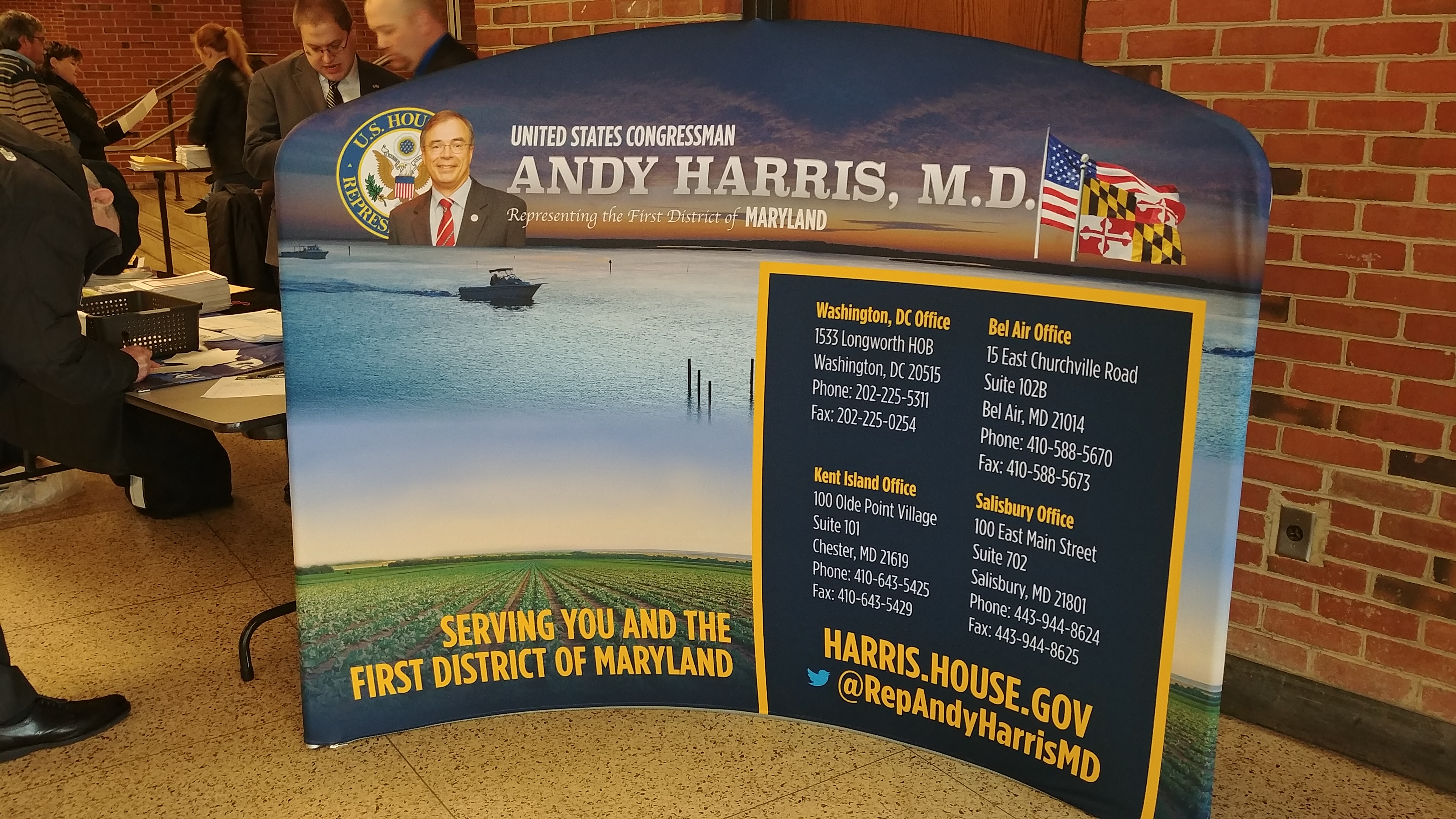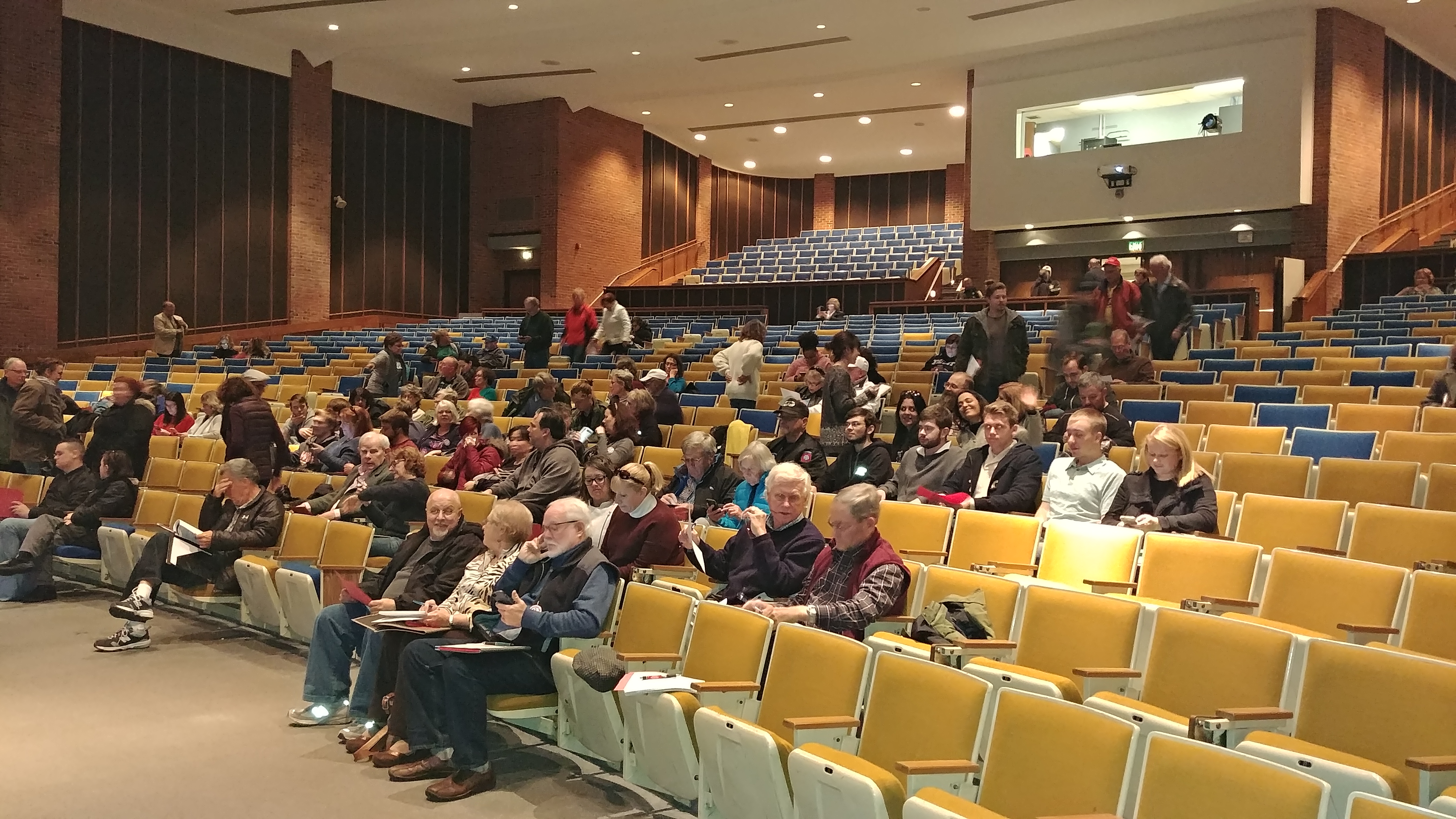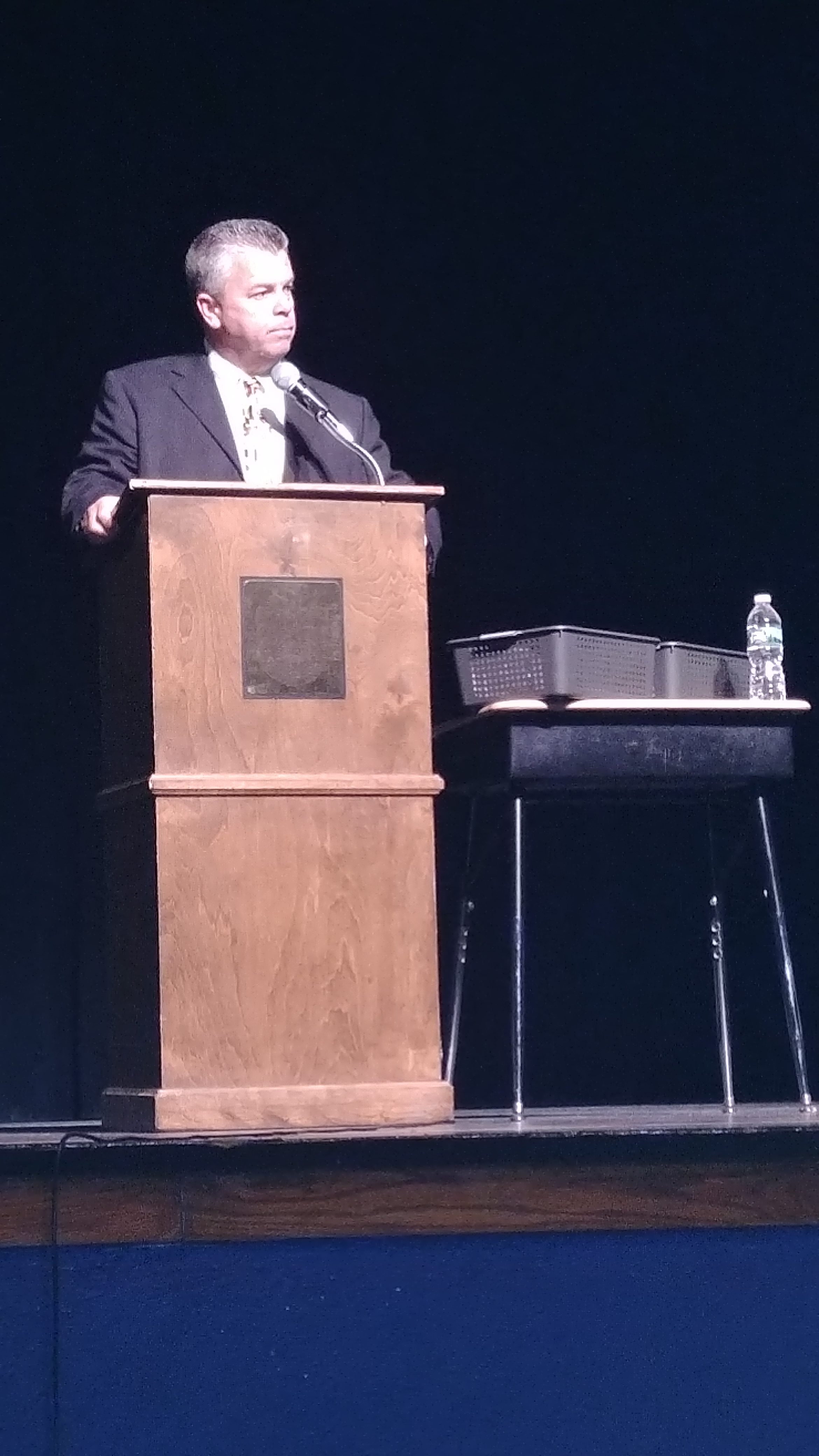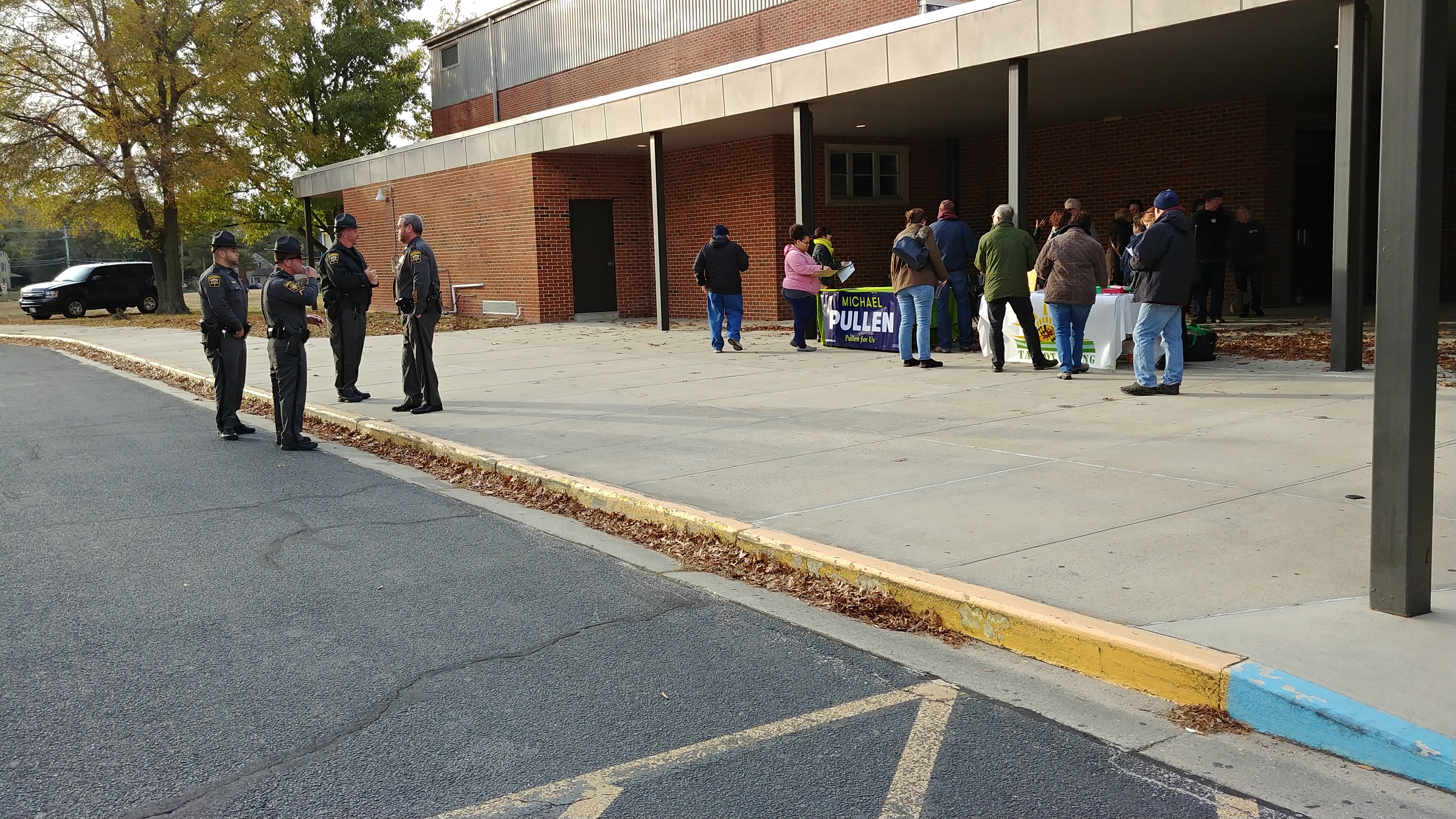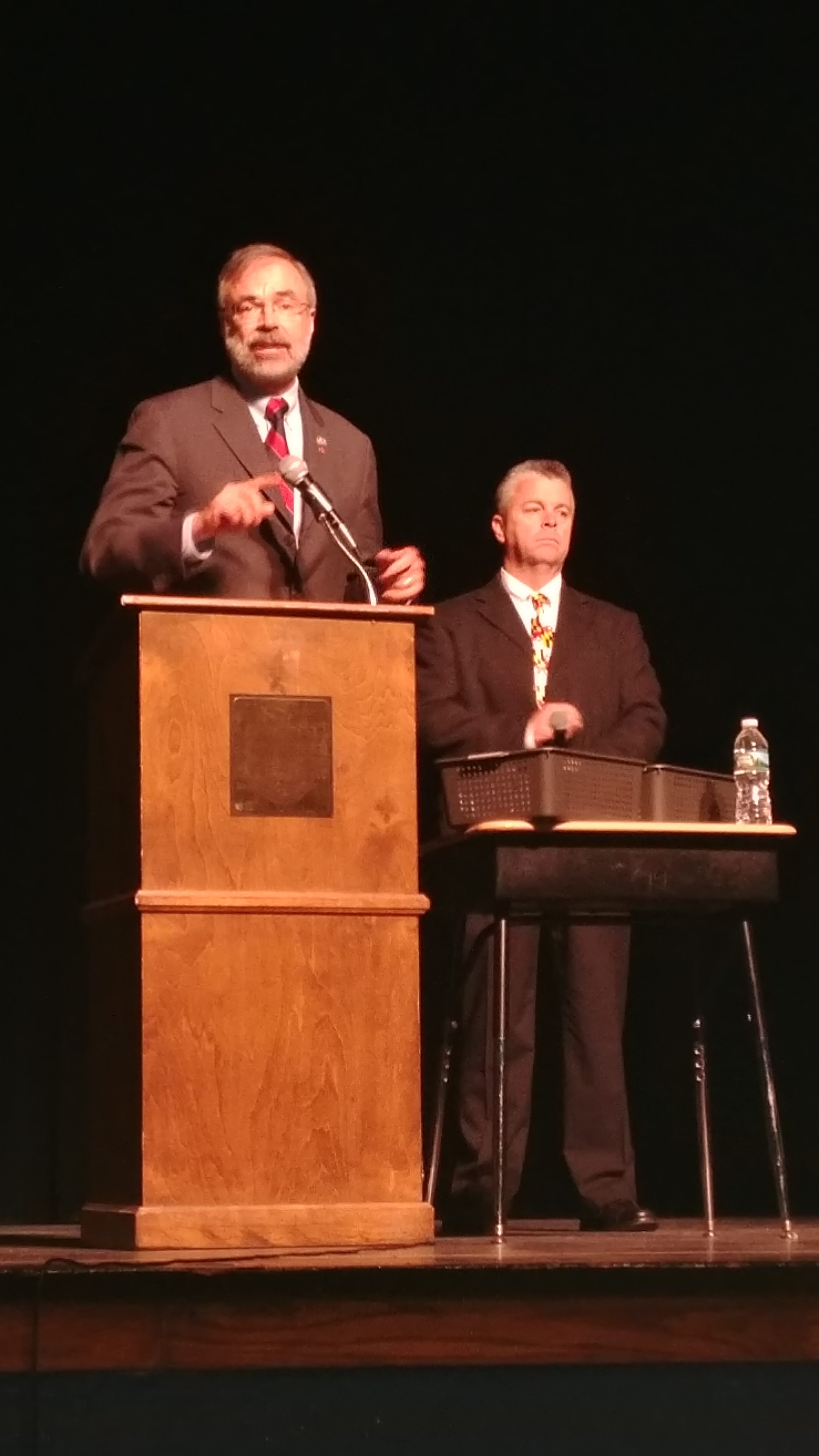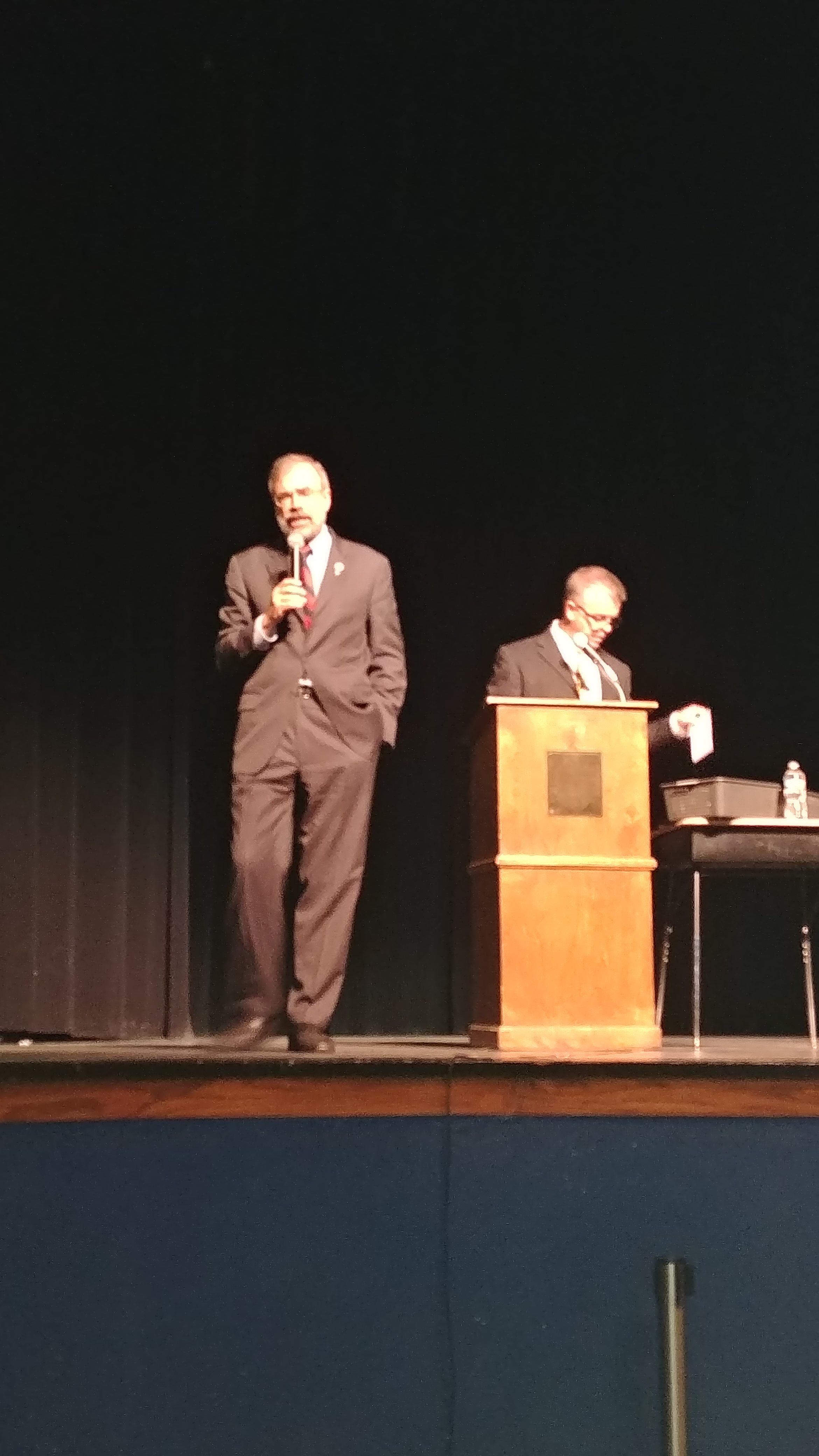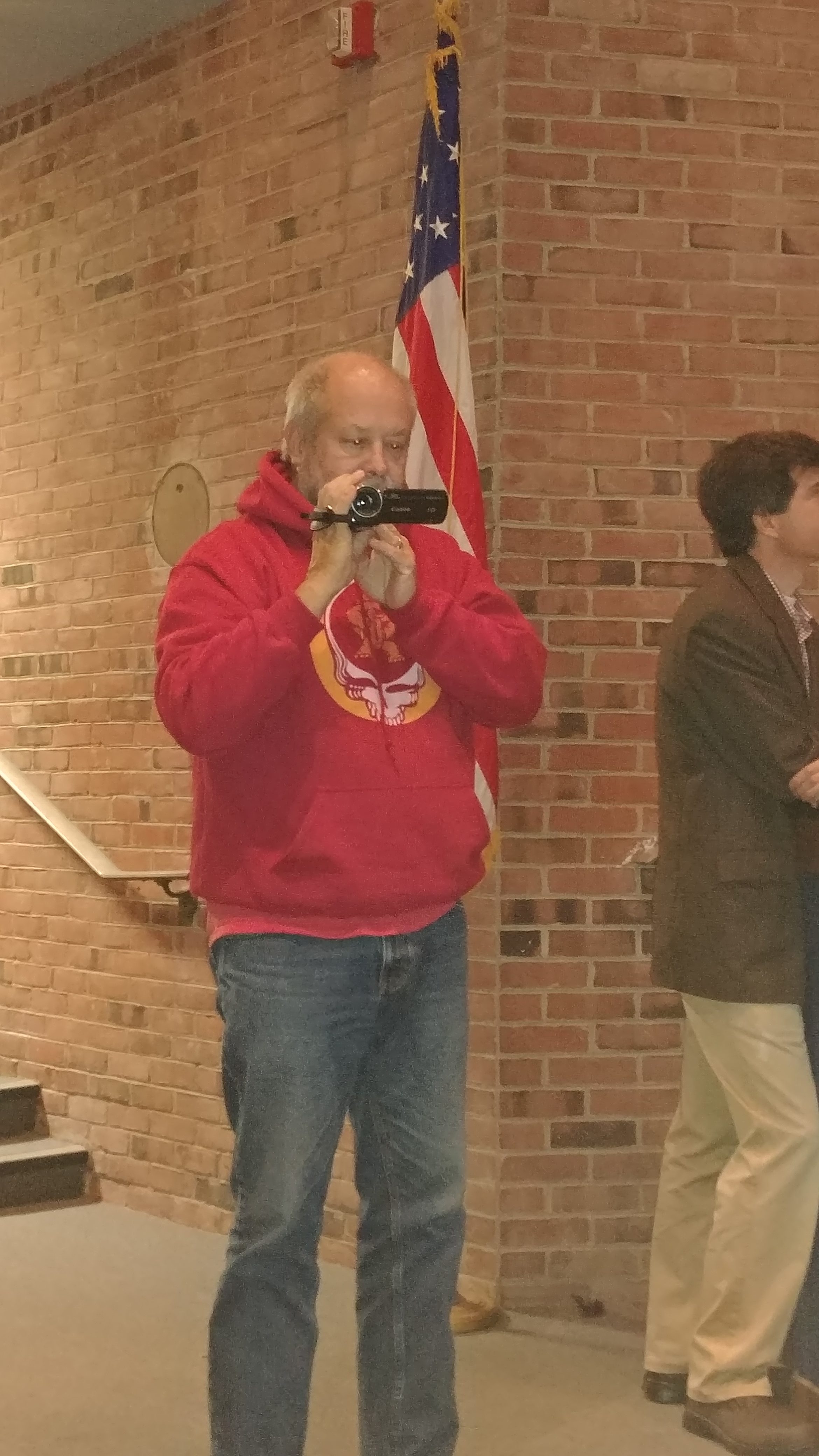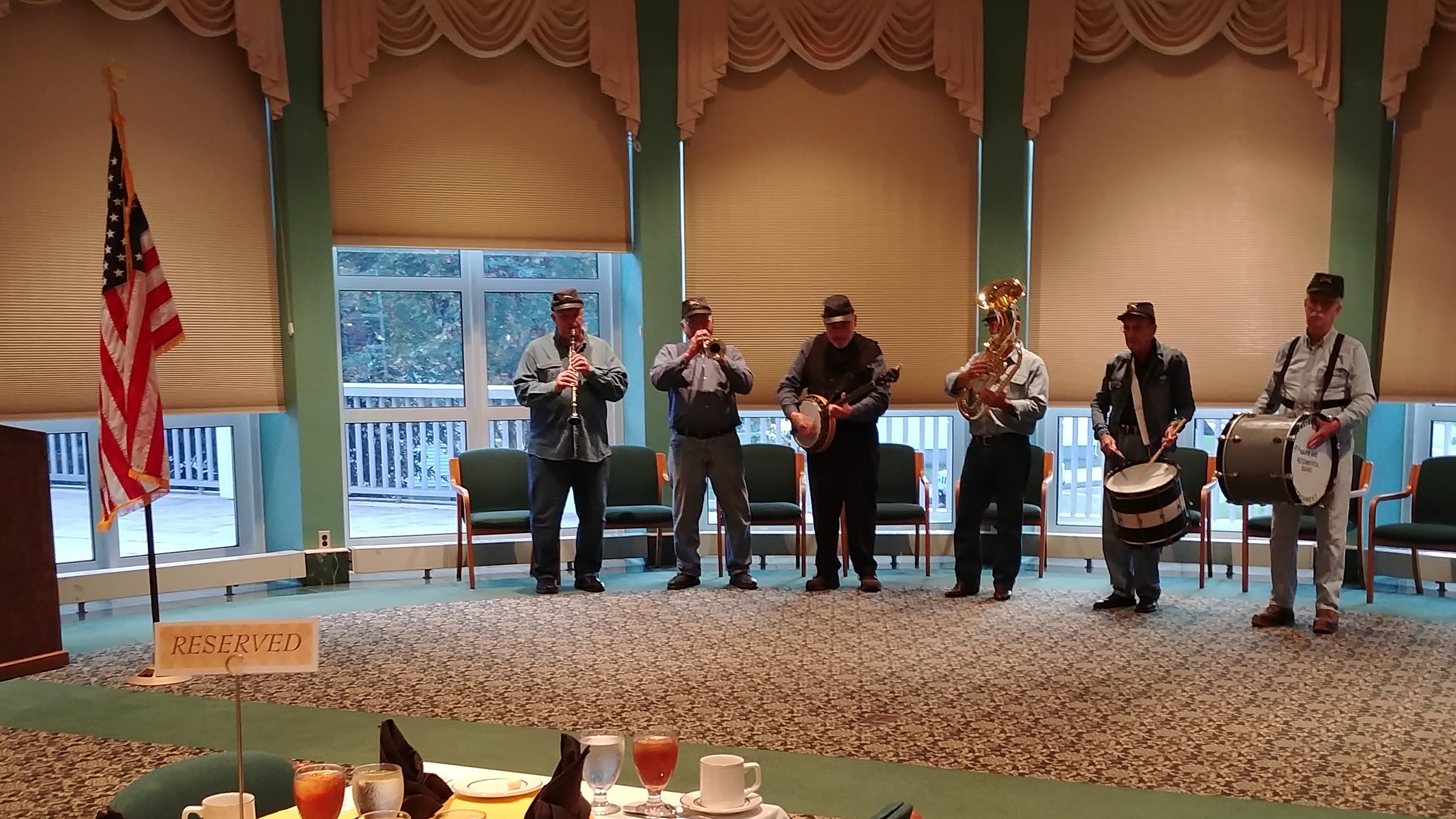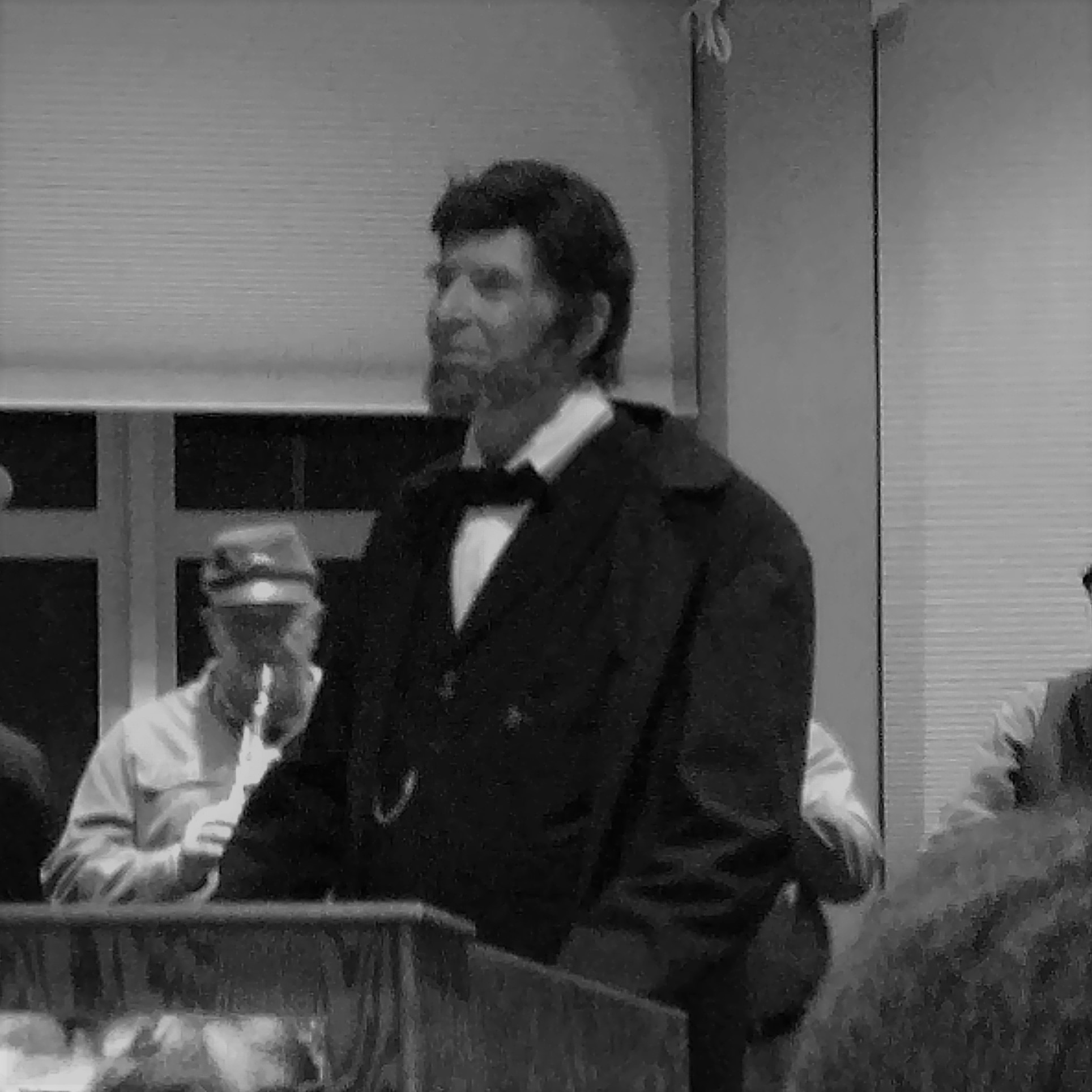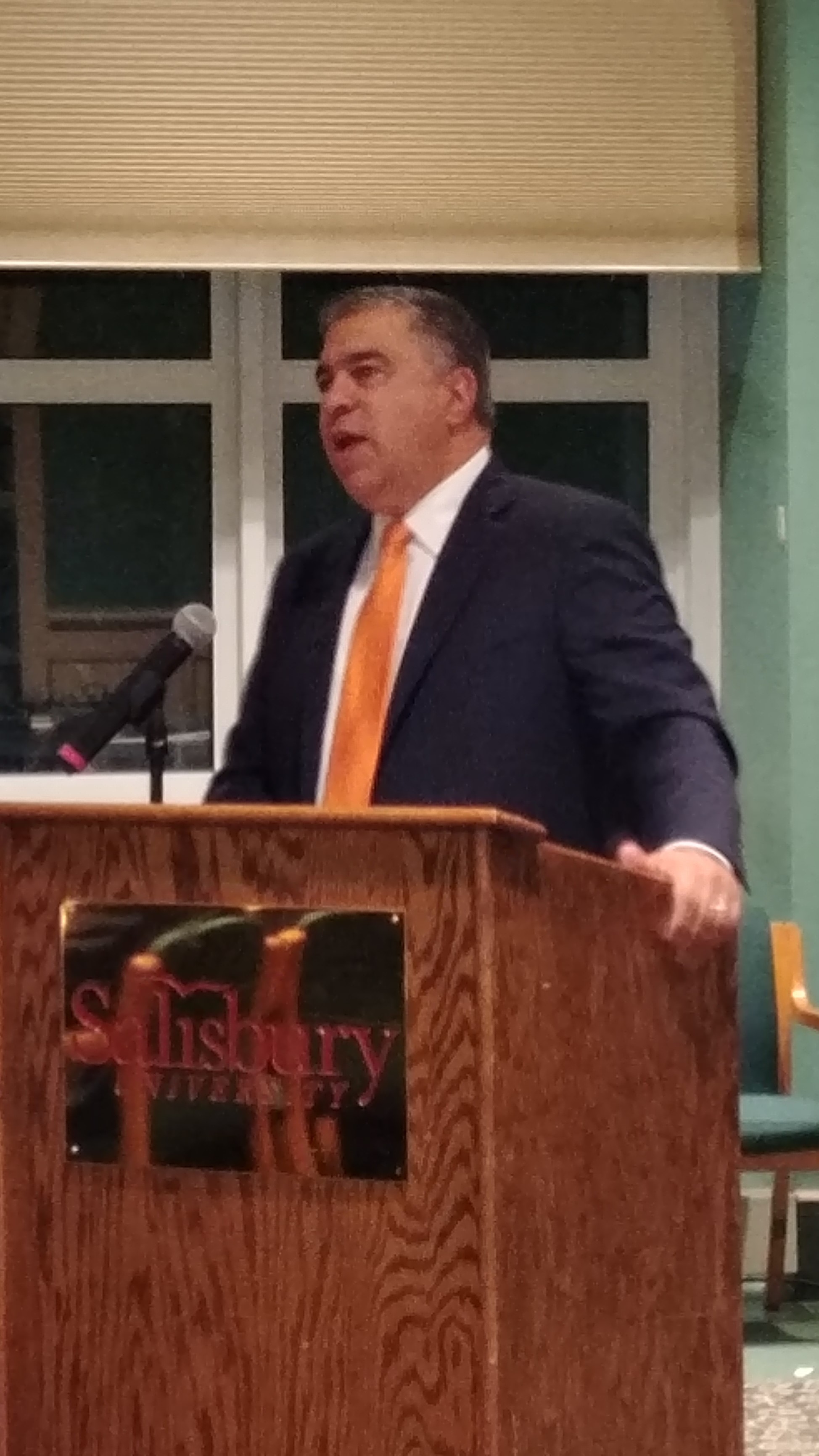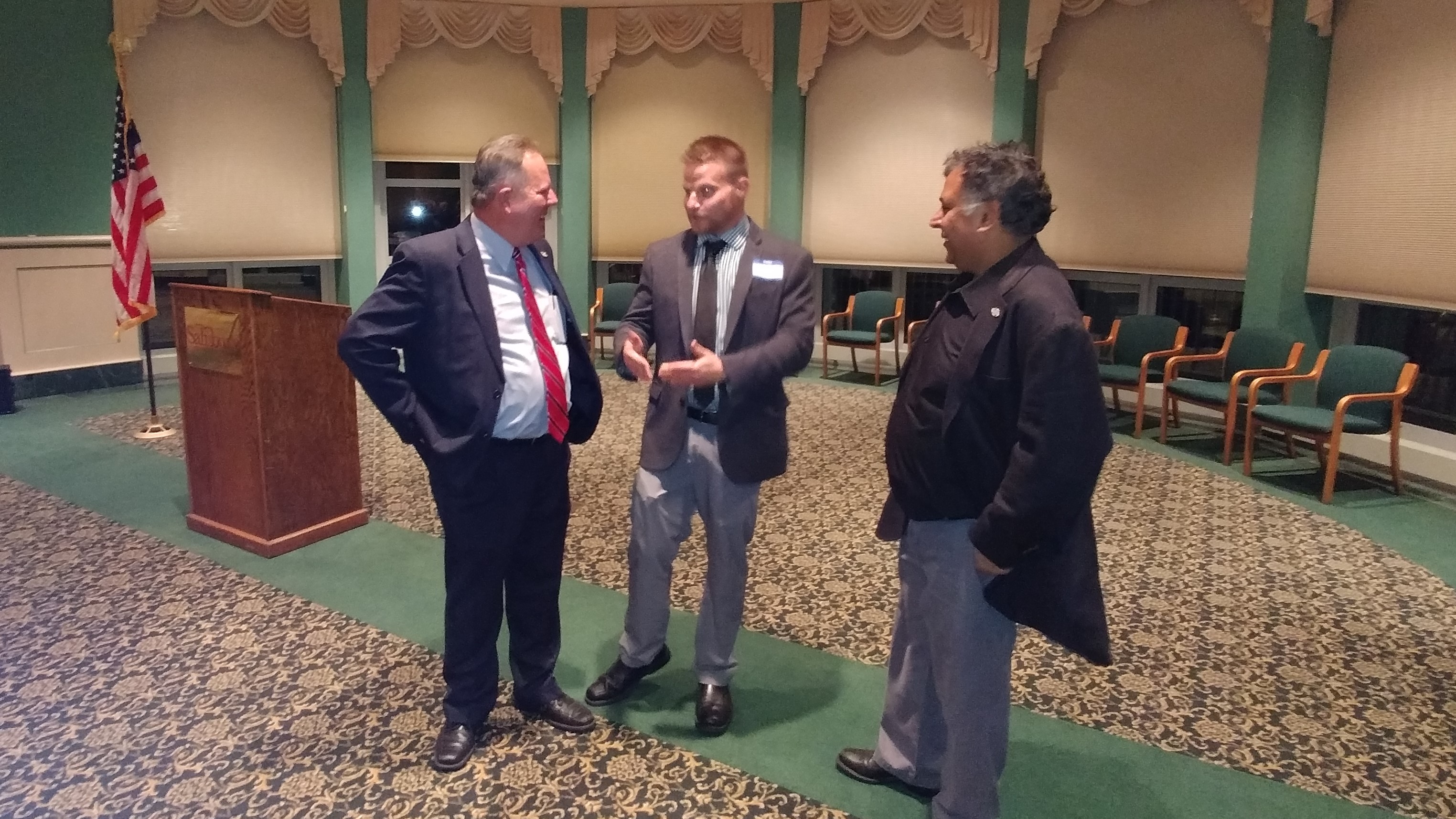The more regular than it used to be look at the pile that’s my e-mail box and dredging out items worth a few sentences to a few paragraphs starts now:
A private fight for $15
My friends at the Maryland Public Policy Institute recently pointed out that there are a number of Maryland companies who are already paying starting employees $15 an hour (or soon will be.) MPPI’s Carol Park notes that, “The main goal for Maryland government should be to incentivize businesses in Maryland to grow larger and more profitable, so that they can become the new Amazon and Target and not only pay their employees $15 an hour but employ hundreds and thousands of Marylanders who are looking for a job.”
While Park is right, she also misses a point. Using that argument, larger businesses may be comfortable latching onto the so-called “Fight for $15” because it allows them to throttle back prospective competition. Small companies running on tighter margins won’t be able to pay the higher wages, so they won’t be able to compete.
Listen, if the SEIU and big business are on the same side (and, according to Leonard Robinson III of the Capital Research Center the SEIU is greasing a lot of Democrats’ palms to get this enacted at the federal level) it just can’t be good for the rest of us.
Returning to the subject of MPPI, they have also recently asked the state to “resist” raising taxes in the wake of the Kirwan Commission report advocating an additional $3.8 billion in school spending – none of which is slated to follow the child as it should. They cite prospective income tax increases on the middle class as well as possible expansion of the sales tax to include more services and business tax hikes as possible outcomes.
Knowing how the Kirwan Commission came together, is it any wonder higher taxes are on the docket? Resist we must.
Did Trump really cave? Or is it “fake news” from the dividers of Indivisible?
This probably deserves its own post, but we all know Indivisible will take credit for anything that’s a loss to America or makes President Trump look bad – naturally, that extends to the end of the recent Schumer-Pelosi shutdown. So this was their “state of play” after the furlough ended.
Pay attention to the “ask” – Republican Senators are asked for “No new wall money. Keep the government open.” It sounds to me like the Democrats have already determined they will shut it down again and try to blame Trump again. Nope, that one would be on you – particularly since Democrats have the majority in the conference committee.
In another Indivisible-related item I found interesting, they laid out a fundraising wish list in an e-mail I received in the wake of the shutdown:
- $1,475,000 for “doubling our organizing team,” adding 14 state-level organizers, 3 digital organizers, and 3 training organizers.
- $80,000 for Hubdialer, which, as the name implies, assists volunteers in making phone calls.
- $114,000 for Mobile Commons, which is a text messaging system.
- $1,315,820 for digital ads. More money for Mark Zuckerberg.
- And $140,000 for ActionKit, a “mass e-mailing tool.”
All told, that “ask” is a little over $3 million, which I’m sure they’re going to invest in pushing more propaganda for 2020. Yep, that’s some grassroots for you.
And speaking of Astroturf…
If you wondered why Obamacare has hung tough despite its unpopularity, maybe this is why. From CRC’s Hayden Ludwig:
At least thirteen pro-Obamacare organizations aren’t independent organizations at all, but websites hosted by a handful of mega-funder nonprofits: the Sixteen Thirty Fund, New Venture Fund, and Hopewell Fund.
Those three funds are in turn managed by Arabella Advisors, a mysterious consulting firm based in Washington, D.C. Arabella Advisors advises wealthy clients on what it calls “strategic philanthropy.” In practice though, Arabella’s strategic giving involves philanthropic investments to left-leaning causes and organizations.
“Who is Behind the Groups Pushing Obamacare?”, Hayden Ludwig, Capital Research Center, January 10, 2019.
Nor should we forget this tangled web the Left weaved.
And people thought the TEA Party was Astroturf because Americans for Prosperity printed up a batch of signs? Okay then, feel free to be wrong.
More wasteful spending
Another winner from the CRC comes in this investigation by Robert Stilson – employment programs that make work for connected non-profits. It’s yet another case of low-hanging fruit to be plucked and another score for the Capital Research Center, which is beginning to become a (sorely needed) bulldog of the Right. Don’t miss their look at the Census controversy either.
The state of American energy…is strong
At least according to the lengthy (over 120 pages) and colorful annual report from the American Petroleum Institute. It should be required reading for environmentalist wackos, including one Larry Hogan. Maybe he’d learn something and get back to what he promised.
If you want something a little more “official” the far less colorful Energy Information Administration Annual Energy Outlook 2019 is out as well. Both documents are chock full of good news for the energy industry as long as government stays out of the way.
So is the state of American manufacturing
Fresh off “another strong month of job growth,” the folks at the Alliance for American Manufacturing believe, “This strength in factory and overall hiring gives the administration considerable leverage headed into the final leg of trade talks with China,” according to AAM President Scott Paul.
But they’re never quite happy, always wanting something more. On the heels of a Trump “buy American” executive order, the group wants it expanded already. Here’s what it covers, in a nutshell:
Within 90 days of the date of this order, the head of each executive department and agency… administering a covered program shall, as appropriate and to the extent consistent with law, encourage recipients of new Federal financial assistance awards pursuant to a covered program to use, to the greatest extent practicable, iron and aluminum as well as steel, cement, and other manufactured products produced in the United States in every contract, subcontract, purchase order, or sub‑award that is chargeable against such Federal financial assistance award.
“Executive Order on Strengthening Buy-American Preferences for Infrastructure Projects,” issued by President Trump January 31, 2019.
While the additional jobs are good news, I’ve always been a little leery of “Buy American” orders such as these just because it’s gaming the market and making American products just that much less competitive on a global scale. Why invest in new technology and better facilities when you have a captive customer?
Having said that, I do believe President Trump is trying to level the playing field a bit as other nations subsidize their industries to varying degrees, too. For several years I received missives from AAM and others decrying the “dumping” of steel on the American market by Asian competitors, and that’s a case where a “Buy American” law can be of assistance. But I would rather see fair trade as a part of free trade, and there can be instances where “Buy American” may not be the best option.
Fighting the last war
In terms of total votes, the most popular politician in Maryland isn’t Larry Hogan. Instead, the top vote-getter in 2018 was Comptroller Peter Franchot, who drew 1,620,264 votes in winning a fourth term in office. Peter carried all but three counties (Cecil, Garrett, and Washington) in defeating the vastly underfunded Republican challenger Anjali Phukan. (Her campaign, beginning in May, 2017 and ending last December, raised a grand total of $2,051.25. The remaining $460 was donated to charity.)
But Phukan remains convinced that Franchot’s victory was achieved through underhanded means. Recently she attempted to convince the Maryland Board of Elections that an investigation into Franchot’s campaign finance was necessary, but to no avail. So she took the next step:
With no administrative options left, at the suggestion of some fellow Republicans, I filed a “Writ of Mandamus” with the Circuit Court in Anne Arundel County, to make the Board of Elections investigate my concerns, and act accordingly, as required by Maryland law. In this writ I also requested an injunction and declaratory judgement. I had presented my concerns before the election board as I discovered things in the process of reviewing his campaign’s financial records, and yet the account was still deemed compliant enough for Franchot to be certified!
Anjali Phukan, newsletter to supporters, January 27, 2019.
She’s also began plugging an obscure electoral watchdog website that’s had barely 700 visits in the last 2-plus years (as there is still 2016 information on it.) A GoFundMe campaign for it has raised a grand total of $5. But while it seems Phukan is tilting at windmills, she brings up some very troubling concerns about the Maryland campaign finance system.
Having written and read a few campaign finance reports in my time, I’m sure I’ve pointed out the weaknesses in the system. But a glaring one is how one very minor change in information submitted could conceivably allow an entity to donate far more than the prescribed limit, and seldom does the Board of Elections act on these irregularities. Since I haven’t heard of them overturning any elections due to unlawful campaign finance, I presume the punishment is generally making the campaign return the donation and perhaps a modest fine to the candidate and/or treasurer.
I glanced through Phukan’s summary of Franchot’s issues and, while it wasn’t a vast percentage of his campaign funding, you would think a person who is charged with being an accurate collector of revenue wouldn’t have such large accounting errors. It seems to me that the Board of Elections is just putting these self-reported records out to present a fig leaf of accountability but not really checking into them. (And let’s face it: most campaigns in this state don’t involve enough money to pay the mortgage for a year.)
And, by extension, the lack of interest in checking Franchot’s campaign finance seems to be echoed in their lack of interest in (or utter contempt regarding) cleaning out voter rolls. The erstwhile watchdog group Election Integrity Maryland found thousands of duplicate registrations in a May, 2014 survey. (Third release here, from an archived web page.) It’s now February, 2019, and something tells me that number is twice as high. Just wait until they get the automatic voter registration!
In passing
I couldn’t let this post go by without mentioning the recent passing of my former colleague on the Wicomico County Republican Central Committee, Dave Goslee, Sr. Sadly, the 78-year-old Goslee had just in November won a seat on an institution he’d been fighting to reform for the first ten years of his twelve-plus year tenure on the Central Committee, the Wicomico County Board of Education.
Dave showed the value of getting out the vote as he won that Board of Education seat by one vote after a December recount showed that vote was incorrectly credited to his opponent. But the fourth-term WCRCC member couldn’t beat leukemia, and it’s likely his opponent will get the seat back anyway as a 14-member panel mainly comprised from the local schools will select Goslee’s successor – that committee selected William Turner, who Goslee defeated for the seat, in 2017.
Dave and I were not the closest of friends on the committee when we first started, but over the years we developed a respectful relationship as we each came to understand what the other brought to the table. He was also a devoted season ticket holder for the Shorebirds, so I saw him often even after I left the WCRCC. He will be missed, both at the games and certainly in local politics.
Coming up…
I almost put this into the odds and ends, but decided I would devote a stand-alone post to those who would tell me how to do my job. I may use that as the light-hearted stack of stuff to start the weekend.
I also have the third in a quick batch of record reviews to do for Saturday, but that may be the last for a short while. Or it may not.
Longer term, a suggestion I’ve had placed in my hopper once again was to bring back something I tried for a couple seasons in 2014 and 2015: predicting the 25-man Delmarva Shorebird opening day roster. (My 2014 guesses had 10 correct for Opening Day and 5 coming along later in the season. In 2015 I had 11 on Opening Day and 6 later on. That year I did it a week before the season, but it didn’t help.)
This year’s roster may be even more tricky because of the new management for the Orioles – players who may have been favorites under the Duquette regime may not catch the eye of Mike Elias, who will presumably prefer a player more like those in the Astros organization from which he came. (And who am I to argue with their success? Not only was the major league team a division winner in 2018, so were four of their top five farm clubs – the other was a close second. On the other hand, the Shorebirds were barely a .500 team but that was still best among Baltimore’s full-season affiliates last season.)
But since my situation is a little better than it was back in mid-decade I think I’ll give it a shot. Still not going back to Shorebird of the Week but at least I’ll enhance my coverage this way.
So the mailbox is emptier and you’re up to date.


